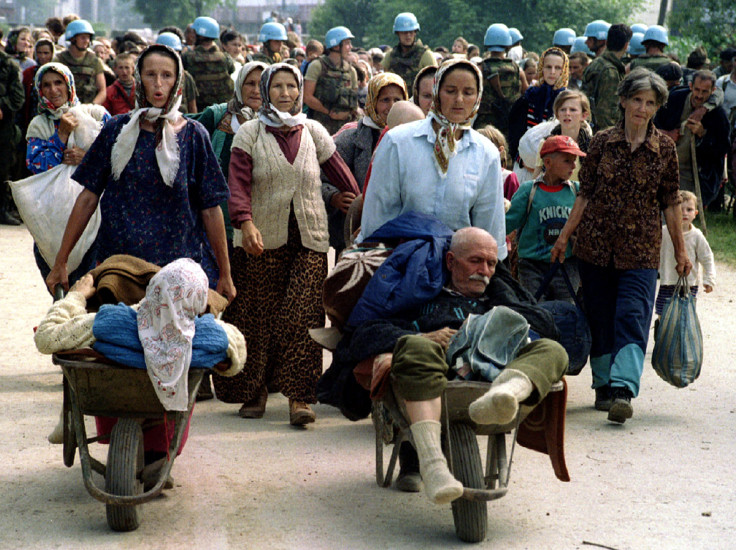Isis Syria Genocide: Kobani 'New Srebrenica' if Captured by Islamic State Warns UN Envoy

UN envoy to Syria, Staffan de Mistura, has made a strong comparison between the standoff in the Syrian Kurdish town of Kobani to the 1995 siege of Srebrenica in the former Yugoslavia - where more than 8,000 Muslim men and boys were massacred - in an attempt to convince Turkey to allow volunteers to cross the border.
Since the Islamic State (also known as Isis) launched an assault on the town, sending 150,000 Syrian Kurds to Turkey, Ankara has been reluctant to join the US-led coalition against the jihadists and even prevented Turkish Kurds from joining their fellow fighters.
Instead, Turkish leaders proposed a border buffer zone to include ground troops and a no-fly zone over the border area. They also rejected a greater role until the coalition lays out a strategy to oust Syrian president Bashar al-Assad.
Western powers have piled pressure on to Nato member Turkey to join in military operations and avoid a possible humanitarian disaster. De Mistura told a news conference: "Do you remember Srebrenica? We do. We never forgot and probably we never forgive ourselves."
The reference is to the Bosnian Serb siege of Srebrenica, which was supposed to be under UN protection. Dutch peacekeepers failed to protect the Bosnian Muslims (Bosniaks) who took refuge at a UN base in Potocari, outside the town. They handed the refugees over to the Bosnian Serb army, who gunned them down at execution sites.
"We would like to appeal to the Turkish authorities... to allow the flow of volunteers at least and their own equipment in order to be able to enter the city and contribute to a self-defence action," de Mistura said in Geneva. Thousands "will most likely be massacred," he warned.
It has been calculated that 500 to 700 mostly elderly people were still sheltering in Kobani. "When there is an imminent threat to civilians, we cannot - we should not be silent," said de Mistura.
© Copyright IBTimes 2024. All rights reserved.






